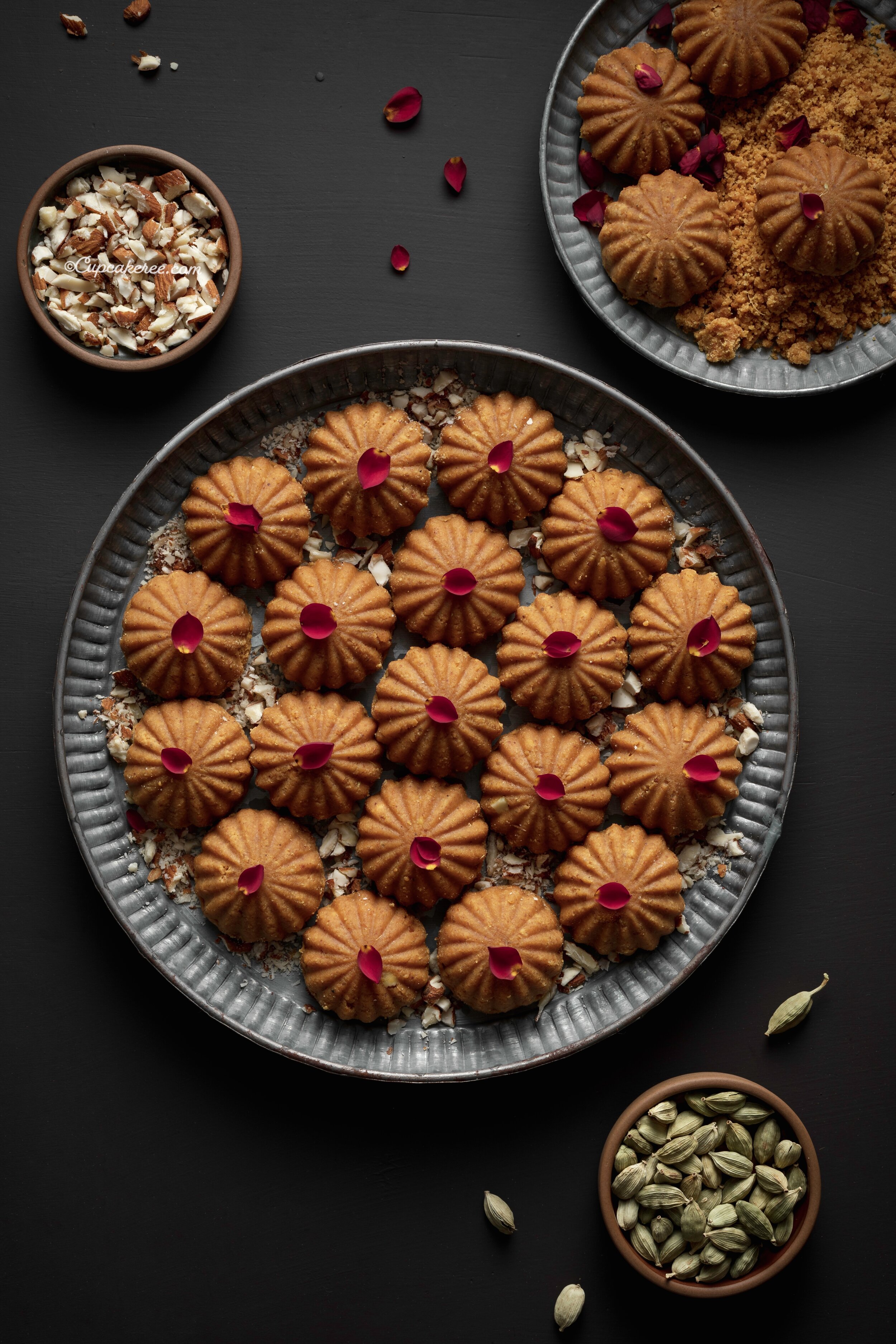Besan Badam Pedas (Gluten-free)
If (like me) you love besan laddoos, you will certainly enjoy these besan badam pedas. Both are similar in taste, but the latter have a nuttiness and crunch from the addition of almonds. Khoya (condensed milk solids) gives them a creamy richness and melt-in-the mouth texture. The pedas are sweetened with a thick syrup that can be made with either jaggery or sugar. If you opt to use grated jaggery, measure out packed cups. For sugar, use the scoop and level method. The syrup needs to be reduced to a three-thread consistency (I have described the procedure below).
The preparation of this sweet requires a bit of care and elbow grease. I am all for shortcuts in the kitchen, but on (a festive or special) occasion I do not mind putting in the extra effort. Especially when the outcome is so rewarding and delicious! These pedas got nods of approval from everyone in the family, including my mother and mother-in-law (both asked to take some home). In my book, that is unmistakable proof of a winning recipe.
Recipe
Besan Badam Pedas
(Makes about 24 pedas)
Ingredients
1 1/4 cups gram or chickpea flour (besan)
1/2 cup blanched almond flour (this can be substituted with finely ground almonds)
1/2 cup + 2 tbsp (150 gms) ghee
1 cup (113 grams) unsweetened khoya or mawa, crumbled (this can be substituted with full fat milk powder)
3/4 cup grated jaggery or sugar
1/3 cup water
1 tsp ground green cardamom
2 tbsp chopped almonds
1-2 tbsp single cream or full fat milk, as needed
Method
In a heavy based kadhai (wok) or pan, melt the ghee. Add the gram and almond flours. Roast over medium heat, stirring continuously for about 15-18 minutes. Make sure to scrape the sides and bottom of the pan to prevent the flours from burning. After 15 minutes, the mixture will darken in color and turn aromatic. The consistency will be loose and pasty. At this point, turn off the heat.
Add the crumbled khoya and mix well. The residual heat will help to melt the khoya. Keep stirring until all the lumps have disintegrated and the khoya is completely incorporated into the roasted flour mixture.
Return the pan to low heat and cook, stirring for an additional 5 minutes. Remove from heat and transfer the mixture to a heat-safe mixing bowl. Add the ground cardamom and chopped almonds. Mix well, then set aside whilst you prepare the syrup.
Make the Syrup -
Combine the grated jaggery and water in a wide, heavy-based pan and bring to a boil. Stir until the jaggery dissolves completely, then strain the syrup to remove any impurities and return it back to the pan. If using sugar, add a tablespoon of milk and skim off any scum that rises to the top.
Gently boil the syrup over medium heat, stirring frequently, until it thickens to a three-thread consistency. To test, place a drop of syrup on a plate (it should hold its shape). Allow to cool for a few seconds, then touch it with your forefinger. Bring your forefinger and thumb together and pull apart gently. The syrup should form a long, stable thread that does not break. This stage is referred to as “teen taar ki chashni” in Hindi.
Once it reaches a three-thread consistency, take the syrup off the heat and quickly add it to the gram flour-almond-khoya mixture. Stir well to combine. Add 1 or 2 tablespoons of cream or milk, as needed. The mixture should be moist enough to hold together when pressed between your fist.
Using clean hands, take small portions of the mixture and press them tightly in your fist to form golf ball-sized rounds. Roll until smooth and flatten slightly. You could also use a mold to shape the pedas. Arrange the pedas on a parchment-lined plate or thaali. Decorate with chopped almonds or dried rose petals and allow them to cool completely before serving.
The pedas taste best the day they are made. Store any leftovers refrigerated in an airtight container for 3-4 days (let them come to room temperature before eating).


